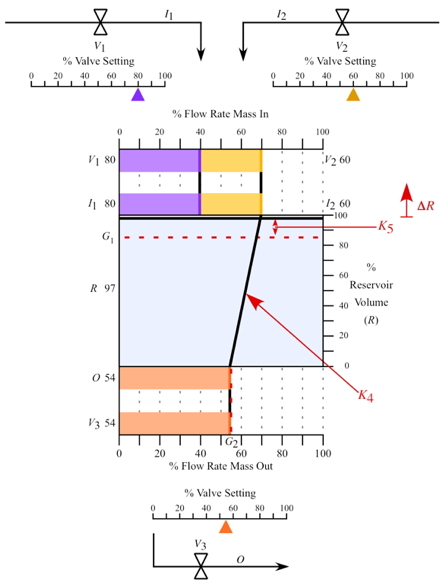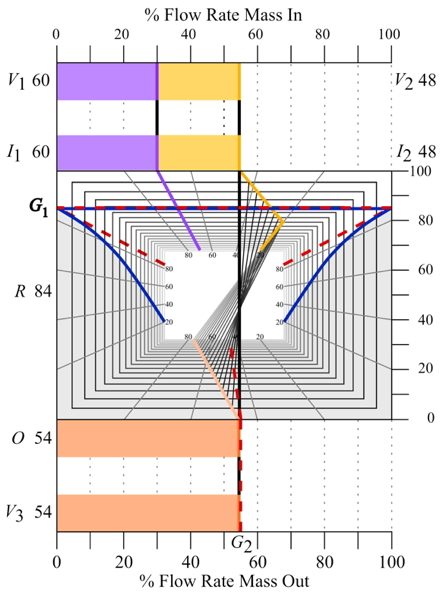
Award Winning Research!Ecological Display Design:Configural DisplaysDr. Bennett has extensively investigated theoretical and applied issues in the design of "configural" displays. This work is highly acclaimed, with one article being rated as the 7th most influential paper ever published in the Human Factors Journal [click here for details] and a second article winning the HFES Ely award [click here for details]. The "building blocks" of a configural display are the unique analog representations (e.g., bar graphs) that represent low-level data (i.e., individual measured variables) in a domain. These low-level graphical elements are carefully arrayed in space (and sometimes connected with "contours") so that they "configure" to produce higher-order geometrical forms. Variations in the values of the measured domain variables will therefore produce distortions in the shapes of the higher-order geometrical forms. These distortions are usually referred to as "emergent features": the higher-level visual properties (e.g., symmetry, parallelism) that arise from the interactions of the lower-level graphical elements. Emergent features are highly salient (i.e., visually prominent) and "attention-grabbing." The critical design consideration in configural displays is the quality of the "mapping" between the emergent features produced by the display and the higher-order semantic properties of the domain (e.g., mass balance). That is, how well do the emergent features produced by the display geometry reflect the constraints of the task domain? If the display produces highly salient emergent features and these emergent features directly reflect the critical data relationships and inherent constraints in the domain, then improved performance is likely to follow. As a simple example, a break in the domain constraints (i.e., a fault) should be reflected by a break in the geometrical constraints of the display (i.e., a distortion of the geometrical form). In summary , effective configural display design involves the mapping of domain constraints (i.e., goals, functions, physical properties) into a set of graphical constraints (e.g., geometrical forms) that match human visual constraints (e.g., visual attention and form perception). A properly designed configural display will allow the human to see the solution to a problem directly (using powerful perceptual processes) as opposed to deducing the solution (using less efficient cognitive resources such as working memory). References to work in the area:
© Kevin B. Bennett, all rights reserved phone: 937-775-2444 |
A configural display for process control that produces highly salient visual properties (emergent features) and dynamic behaviors that reflect process constraints (Bennett, Nagy, & Flach, 2006).
A "time tunnel" configural display (Bennett & Zimmerman, 2001; Bennett, Payne, & Walters, 2005): This display combines the benefits of configural displays (emergent features) and the benefits of trend displays (changes over time). |
|

